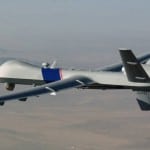
The Transportation Security Administration (TSA) last Thursday released its first ever roadmap for open architecture, an effort that agency hopes will increase competition and innovation, and lower costs for the screening equipment it purchases and deploys to safeguard the nation’s air transportation system. The roadmap doesn’t give any timelines for when the agency expects to begin introducing modular open system architectures into its various screening systems but is meant to provide “holistic direction to guide TSA’s Open Architecture goals and…

 By
By 











